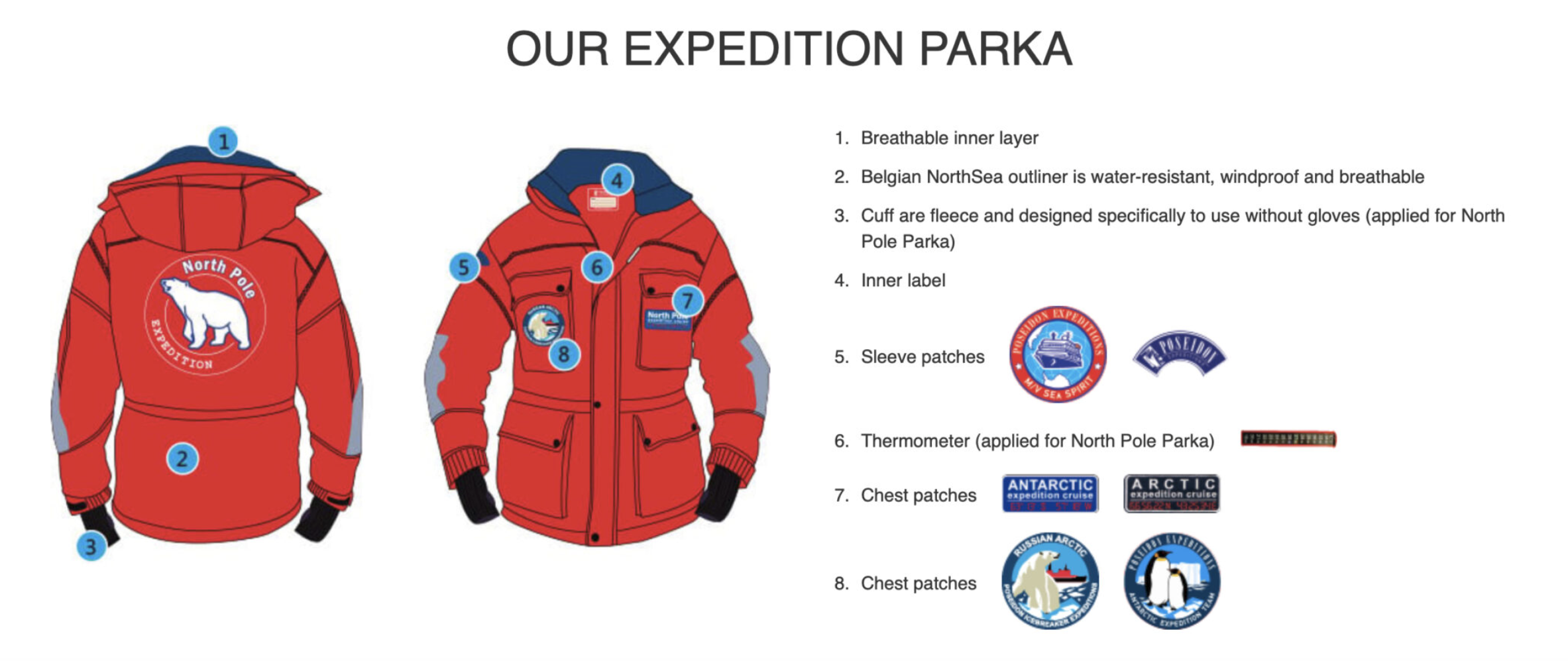Photography Gear and Accessories to Bring To Antactica, Falklands and South Georgia
Thinking about heading to the Southern Ocean? Get ready for the adventure of a lifetime—and some seriously epic photo ops. Capturing the magic of icy landscapes and waddling penguins is the best way to preserve your memories (and make your friends jealous).
Need advice? Whether it’s picking the perfect lens, keeping your batteries alive in the cold, or nailing that jaw-dropping composition, we’ve got you covered. Bonus tip: don’t let your camera fog up when you gasp at the views—breathe away from the lens!
Biosecurity & Antarctic Photography
Before we dive into the wonders of Antarctic photography, let’s talk biosecurity. With the arrival of Avian Flu in South Georgia in October 2023 and Antarctica in February 2024, protective measures have become more critical than ever. To safeguard Antarctic wildlife, we will continue to follow the guidelines set by IAATO (The International Association of Antarctic Tour Operators). We encourage you to join us in respecting these measures during your photographic adventure.
Here’s what you need to know:
We will clean and vacuum your gear thoroughly before and after each outing.
We will disinfect your boots and camera tripods regularly.
You must maintain a strict minimum distance of 5 metres (16 feet) from wildlife—zoom lenses are your best friend!
We will teach you the best ways to photograph while we avoid lying down. Options include crouching, squatting, or kneeling to rest or take photos… and I am sure One of us will be there by your side to help you.
Keep all possessions—bags, jackets, cameras—off the ground. Understanding this, we will teach you ho best to pack and still get the most out of your adventure. We’ve done this numerous times, and are well versed in the tips and tricks.
These steps help protect the fragile ecosystem while allowing you to capture incredible memories responsibly. Together, we can keep Antarctica as pristine and wild as the photos you’ll take! Now that we addressed this, please allow me to make the best recommendations for gear with these new procedures in mind.
Let’s Talk Packing List (With a Dash of Humor)
Layers, Layers, Layers
When it comes to Antarctic weather, layering isn’t just smart—it’s survival. Think of yourself as a human onion, minus the tears. Start with thermal underwear (silk or polypropylene), tall, warm socks, and thinner polypropylene or merino wool socks.
Mid-layers? Go for turtlenecks, fleece tops and bottoms, or wool sweaters. (Channel your inner polar explorer here!) Add waterproof trousers or ski pants, and finish strong with a fleece neck buff, waterproof mittens with thin liners, a warm hat, and a shell anorak with a hood. Don’t forget sturdy shoes with rubber waffle soles—Antarctica is no place for fashion over function.
Let’s start with the Winter Jacket
The good news is You don’t need to bring one for the cruise. Not because it’s warm, we provide them to you on the ship, and the best part, it’s yours to keep. When you get home, you will be the one walking through your local grocery store with a jacket that is full of patches and emblems that tell a story of being a polar explorer.
Footwear That Can Handle It
Standard hiking boots in Antarctica? Cute, but no. You’ll need muck boots built for snow and ice, which we will provide for you. For onboard relaxation, pack comfy shoes for walking around the ship, and runners for the gym (because nothing says adventure like hitting the treadmill while sailing past icebergs).
Gloves, Neck Gaiters, and Beanies
Your hands, neck, and head deserve VIP treatment in Antarctica. Layer gloves with a polyester base and a waterproof outer shell. Extra gloves are a lifesaver—one pair for warmth, another for photography.
A snug neck gaiter and a wind-resistant beanie are musts. Bonus tip: pack an extra beanie in case one gets sacrificed to the wind gods.
Socks: The Unsung Heroes
Socks are more important than you think. Start with a thin, moisture-wicking poly-blend pair and layer thick woolen socks on top. Bring enough to rotate. Wet socks on shore visits are the definition of misery.
Sun Protection: Yes, Really
The Antarctic sun means business, and the snow acts like a giant reflector. Pack sunglasses with UV protection, a high-SPF sunscreen, and SPF lip balm. No one wants to come back with a sunburn that screams, "I underestimated Antarctica."
Moisturizer: Combat the Antarctic Sahara
Antarctica’s wind and dry air can turn your skin into parchment. Keep it happy with a daily dose of moisturizer because flaky isn’t a good look, even in the middle of nowhere.
Swimwear
You will get the opportunity to take a polar plunge.
Seasickness Medication: Surviving the Drake Passage
The Drake Passage isn’t just a crossing; it’s a rite of passage. Whether you’re a seasoned sailor or a first-timer, seasickness meds are your best friend. Consult your doctor ahead of time, and pack extras of any regular prescriptions you don’t want to run out mid-voyage.
Recommended Extras
For wildlife and landscapes that’ll blow your mind, bring binoculars and a camera (plus spare memory cards and batteries) - much more detail on cameras below. A weatherproof backpack or dry bag, walking sticks, and ice cleats (if you bring your own boots) are also handy. Pro tip: keep your hands free for zodiacs—nothing says “oops” like dropping your gear into icy waters.
Entertainment: Because Downtime Happens
Pack a good book or eReader, music-loaded smartphone, noise-canceling headphones, and a notebook for journaling your adventure. After all, you’ll want to remember this trip when you’re bragging to friends later.
Travel Documents and Essentials
Double-check your passport (make sure it is valid for six months post-trip) and any visa requirements for you. Make sure your insurance covers Arctic delays, medical evacuations and cancellations. Finally, your carry-on should have prescriptions, toiletries, and all necessary documents for a smooth start to your epic journey.
Flight Suggestions
Consider breaking up the flight down to South America into two days, and consider getting down there a day or two in advance. Travel delays are always possible, and we don’t want you to miss out on your Embarkation time.
Packing for Antarctica might feel like prepping for a polar survival challenge, but with the right gear—and a sense of humor—you’ll be ready for anything. Get ready to layer up and make memories of a lifetime!
Choosing the Right Camera GEAR FOR YOU
Antarctica’s epic landscapes and unique wildlife demand the right tools to capture its magic. Whether you’re a seasoned photographer or just looking for some brag-worthy holiday snaps, here’s a breakdown of your options:
DSLR or Mirrorless Cameras
These are the go-to choice for Antarctic photography. Their image quality, creative settings, and lens options make them unbeatable for serious photographers.
Pros:
Exceptional image quality and resolution
Prints large, detailed photos
Offers creative controls like aperture, shutter speed, and ISO
Interchangeable lenses for any situation
Easy auto modes for beginners
Cons:
Pricey and heavier than point-and-shoots
Requires multiple lenses for versatility
Large file sizes for RAW and JPG images
Point-and-Shoot Cameras
For simple, fuss-free photography, a point-and-shoot works just fine. Perfect for capturing memories without the bulk.
Pros:
Lightweight, compact, and easy to use
Affordable with decent zoom options
Great for quick snaps
Cons:
Limited image quality and creative settings
Not as durable as DSLRs
Smartphone as your camera
For simple, fuss-free photography, a smartphonet works just fine. Perfect for capturing memories without the bulk.
Pros:
Lightweight, compact, and easy to use
Affordable with decent zoom options
Lots of smart phone apps to be able to immediately play with your images.
Great for quick snaps
Cons:
Limited image quality and creative settings
Not as durable as DSLRs
Weather-Sealed Cameras
Antarctica’s elements—snow, rain, and sea spray—can challenge your camera or iphone. Consider a weather-sealed model or case to keep moisture and dust out (note: they’re not waterproof). Alternatively, invest in a rain sleeve—it’s essentially a plastic bag for your camera and costs about $10. Cheap insurance for priceless photos!
What cameras do I bring on our Antarctica, Falklands and South Georgia?
On my next expedition in November of 2026 I will have two Nikon z9 and my smartphone as my cameras.
Choosing the Right Lens
Telephoto Lenses
While Antarctic wildlife isn’t shy (hello, penguins!), a telephoto lens helps capture distant subjects like whales or seabirds. A 100-400mm lens is usually enough without weighing down your luggage.
Pros:
Perfect for whales and distant wildlife
Compresses wildlife and landscapes beautifully
Great for wildlife portraits
Cons:
Bulky and heavy
Overkill for up-close penguins and seals
Wide-Angle Lenses
To capture Antarctica’s vast, otherworldly landscapes, wide-angle lenses are a must. Think 24-70mm and 70-200mm. They’re lightweight, versatile, and great for combining wildlife with scenery.
Pros:
Captures sweeping landscapes and intimate wildlife shots
Lightweight and easy to carry
Essential for up-close encounters with curious whales near zodiacs
Cons:
Not ideal for detailed wildlife shots
Frustrating for distant subjects
What lenses will I bring on our Antarctica, Falklands and South Georgia?
On my next expedition in November of 2026 I will have the following lenses:
Nikon 24-70mm f4
Nikon 70-200mm f2.8
Nikon 100-400mm f4.5-5.6
Tripods vs. Monopods
Tripods aren’t allowed on South Georgia and can be tricky on moving ships or zodiacs. However, they’re great for landscapes, time-lapses, or motion blur. If wildlife is your main focus, skip the tripod and bring a monopod instead—it’s lighter, portable, and perfect for long telephoto shots.
Pro Tip: Clean and disinfect your tripod or monopod after every landing to comply with biosecurity measures.
Essential Extras
Extra Batteries and Memory Cards
Antarctica’s cold drains batteries quickly. Keep spares close to your body to conserve power. Bring plenty of memory cards—you don’t want to run out of space during a humpback whale encounter!
Dry Bags
Protect your gear from condensation and sea spray with dry bags. Place your camera in an air-tight bag before re-entering the ship to prevent lens fogging.
Other Must-Haves:
USB stick or portable hard drive for backups
Cleaning kits for cameras and lenses
Weatherproof backpack for zodiac trips
Laptop to review your images and get help processing them from one of our pro photographers.
With the right camera gear and preparation, you’ll be ready to capture the awe-inspiring beauty of Antarctica—just don’t forget to put the camera down occasionally to take it all in!
Bon Voyage!
If you’re dreaming of the ultimate adventure, a Falklands, Antarctic and South Georgia expedition is within reach and shouldn’t feel overwhelming. We’re here to answer all your questions and provide continuous support, so you can focus on exploring the Southern Ocean with confidence and excitement. Adventure awaits—worry-free!




